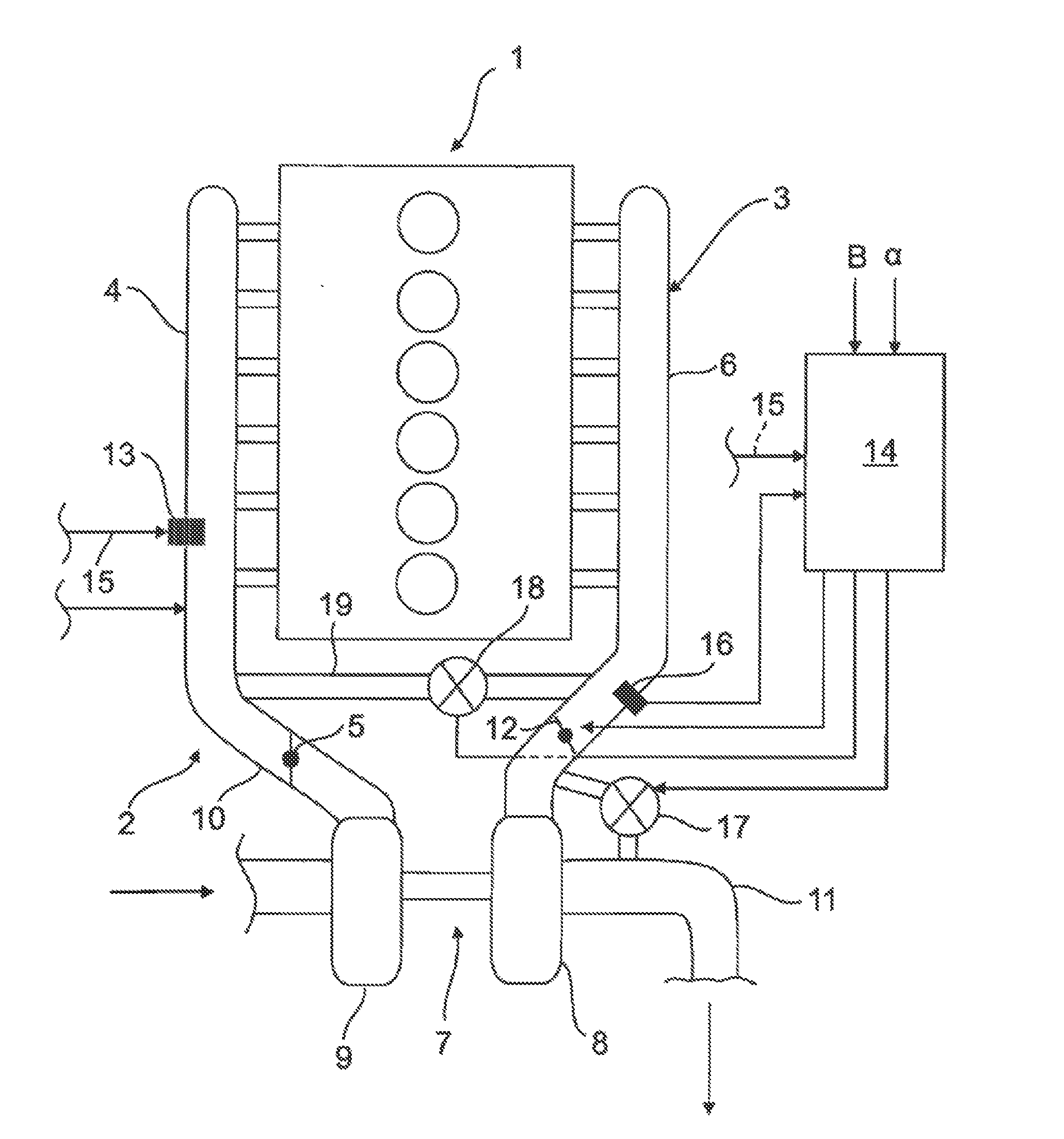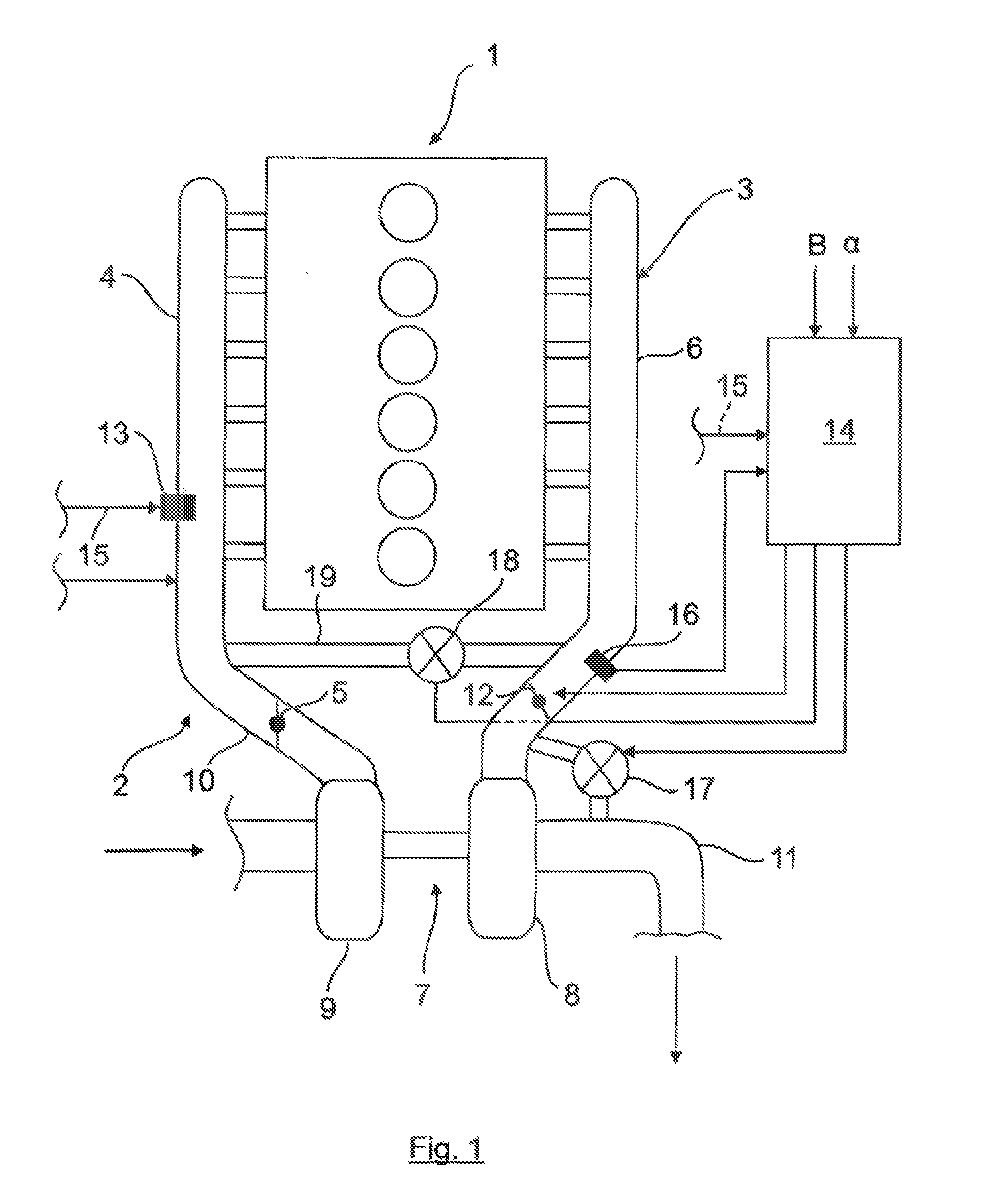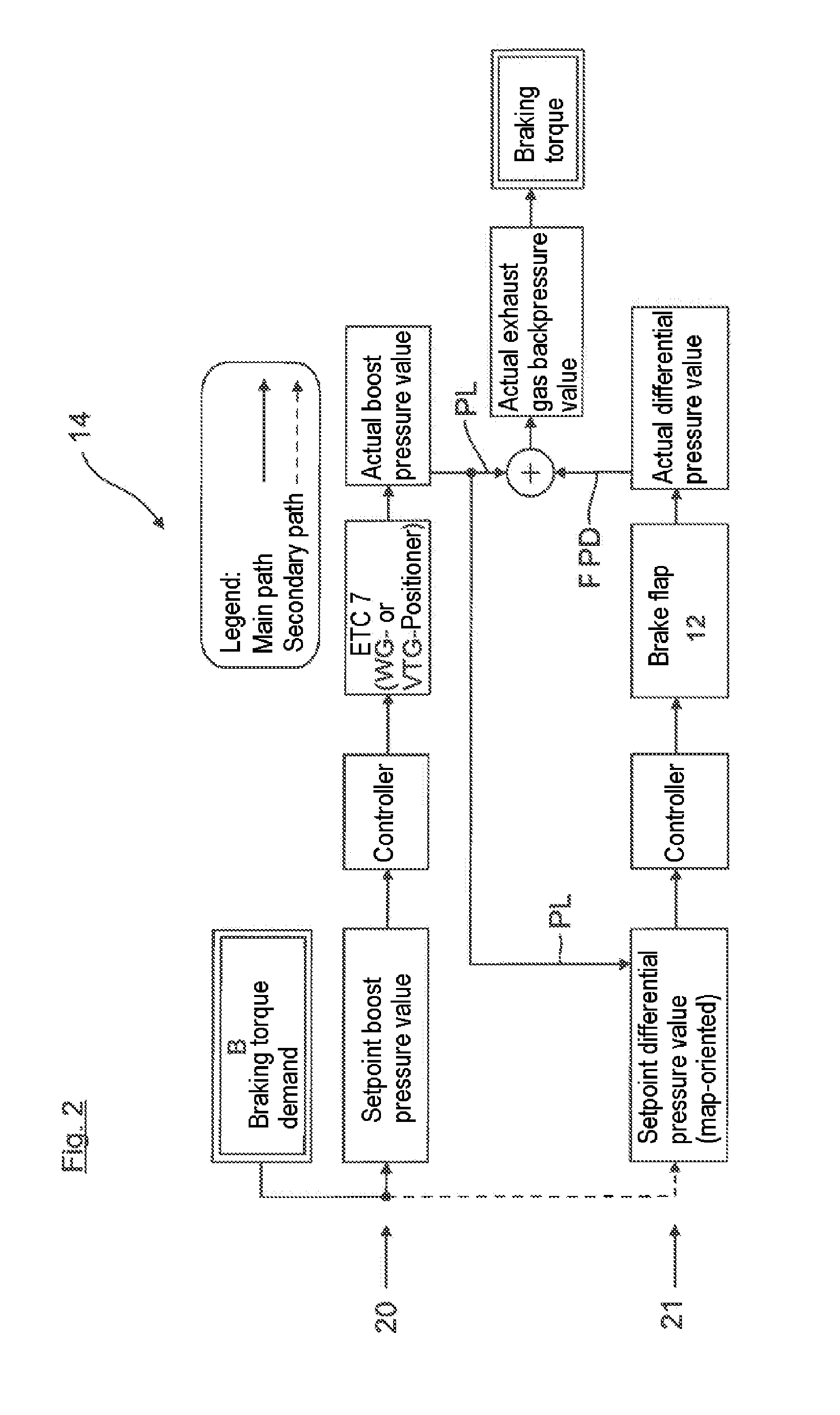Method for controlling an engine braking device and engine braking device
a technology of engine braking and braking device, which is applied in the direction of exhaust gas recirculation, output power, mechanical apparatus, etc., can solve the problems of insufficient ensuring, and achieve the effects of reducing the flow rate of exhaust gas, increasing the inlet-side boost pressure, and increasing the mass flow
- Summary
- Abstract
- Description
- Claims
- Application Information
AI Technical Summary
Benefits of technology
Problems solved by technology
Method used
Image
Examples
Embodiment Construction
[0027]A combustion engine 1 (e.g., a six-cylinder diesel combustion engine), in particular for a commercial vehicle, having an intake system 2 and an exhaust system 3 (of conventional construction where not described) is shown in a purely schematic way in FIG. 1. A throttle valve 5 can optionally be provided in the intake manifold 4 of the intake system 2.
[0028]The exhaust system 3 has an exhaust manifold 6, which is connected to the combustion chambers of the combustion engine 1 and is connected directly or indirectly to the exhaust turbine 8 of an exhaust turbocharger 7. The exhaust turbine 8 drives a compressor 9 in a known manner, the compressor being connected, in turn, to the intake manifold 4 by a line 10 and delivering combustion air at a defined boost pressure PL to the combustion chambers of the combustion engine 1. The exhaust gas flowing out via the exhaust manifold 6 and the exhaust turbine 8 is carried away further by an exhaust line 11. The other lines of the intake s...
PUM
 Login to View More
Login to View More Abstract
Description
Claims
Application Information
 Login to View More
Login to View More - R&D
- Intellectual Property
- Life Sciences
- Materials
- Tech Scout
- Unparalleled Data Quality
- Higher Quality Content
- 60% Fewer Hallucinations
Browse by: Latest US Patents, China's latest patents, Technical Efficacy Thesaurus, Application Domain, Technology Topic, Popular Technical Reports.
© 2025 PatSnap. All rights reserved.Legal|Privacy policy|Modern Slavery Act Transparency Statement|Sitemap|About US| Contact US: help@patsnap.com



